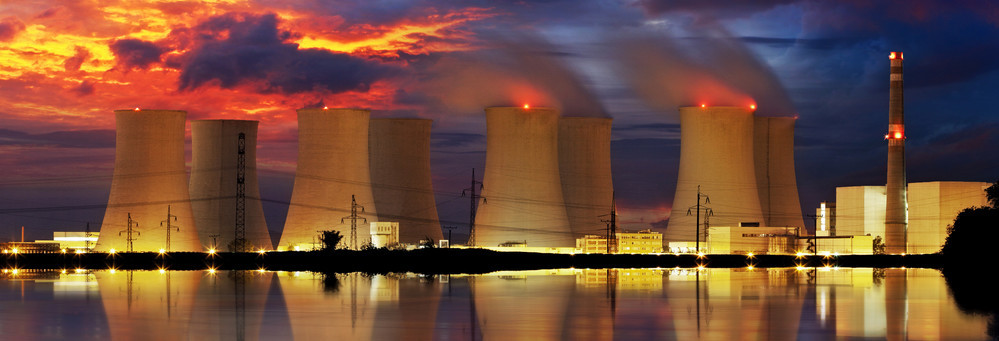Association for Project Management
|
|
The future of project management in the nuclear industries
Blog posted by: Hugo Minney, 07 Apr 2022.

If we’re going to reduce carbon emissions, nuclear power has to be a component of our energy generation portfolio.
The challenge is that nuclear power generation is so expensive. Not necessarily because nuclear costs so much money, but because nuclear projects frequently overrun and over-cost[1]. Uncertainty (eg of delivery date) represents risk. And risk translates into cost. But what causes this over-run and over-cost, and what can we do about it?
The Nuclear Institute Project Management SIG which APM supports has set up a working group to explore this challenge from first principles and we want your input and comments.
Nuclear build and decommission projects are long term
Building a road can take months or even years. Building a new IT system can take weeks or months. But nuclear projects can stretch to decades. With the uncertainty of government policy, energy generation costs from competing sources, and the costs of finance and materials, the wait for a final product creates a problem with financing.
Agile methodology, often used for software builds, is a series of iterations each of which is a viable product. At each point in time, we can assess the benefits of the current iteration, and decide on which features or functions are likely to yield the best return on investment in the next iteration.
This is more difficult with infrastructure. When building a bypass to take traffic from a town centre, we wouldn’t build a donkey track and see how much traffic used before expanding to a six-lane highway, although you might build a two-lane carriageway and expand it as the need arose. To build a site capable of generating electricity, or to prepare a process for managing waste, or to decommission a site post-operation, is usually all-or-nothing.
We’d like to explore the impact of the length of projects on the uncertainty, risk and effectiveness of nuclear projects. And what aspects of agile methodology will improve effectiveness, predictability, and speed?
Hand-offs between personnel cause delays and increase costs
With long projects in nuclear, members of the project team will be replaced, sometimes many times over. Those who start the project may not be the same people who finish it. Does this reduce the sense of ownership and therefore the commitment? Where different organisations are involved in a project (as they inevitably are), does each organisation keep their know-how to themselves?
Nuclear projects are not unique – many major projects last years and change personnel. Successful hand-offs depend on good project documentation, but projects can suffer where the most useful information is in people’s heads and not documented.
However, most organisations in the nuclear industries have systems and processes for capturing lessons learnt and for making use of them. We’d like to explore how different organisations record knowledge, and how to protect projects when staff change. We’d like to understand the scale of the problem (if indeed it is a problem) and put an estimate on how much it costs.
Safety and the regulatory environment slow down decision-making
There’s a false trade-off between safety and productivity. The argument goes that speed compromises safety, and that complying with a strict regulatory environment involves a lot of extra work (and cost, and time).
The culture in nuclear is necessarily about safety. It’s an environment which includes a lot of danger - the buildings and equipment are huge, and the smallest thing out of place (eg a spanner dropped from scaffolding) could be fatal. The materials being moved around, whether liquids or solids, are typically corrosive, explosive, or active.
But nuclear isn’t unique in this. Construction sites and chemical plants include many of the same challenges. We build nuclear plants in sites remote from human habitation, but also geologically stable and not exposed to too much weather. Whereas oil rigs out in the North Sea face nature at its most challenging, a compact building whose purpose is to pump an explosive mixture at fairly high risk.
The regulations (and standards) that we work to are there for a reason, to ensure that we don’t have to over-engineer because we know what’s required. We know how thick to build a wall, and of what material.
Our working group on ‘predictability and stakeholder confidence’ suggested that decision-making is slower in nuclear because the steering boards focus on the wrong things. We’d like to explore the challenges of productivity in a regulated and safety-conscious environment. We’d like to understand if characterising nuclear as ‘safety conscious’ is a problem, and whether re-characterising as ‘innovation conscious within a safety framework’ would make a difference. We’d like to understand what slows nuclear projects, and how to change this.
Each situation is unique, so each project has to be unique
In Europe and the USA, one cause of high costs in nuclear new build is the assumption that every site is unique. This contrasts with the Asian nations, where new plants tend to be exactly the same as previous plants [2].
On one hand, it’s fantastic to work with so many highly innovative people. On the other, each innovation has to be developed, tested, licensed and piloted before deployment, which can cause some significant delays.
China plans to build 150 new nuclear reactors in the next 15 years, and to do this, it won’t take 15 years to build each one. We’d like to explore how much we can simply replicate what went before, or tailor existing solutions. We’d like to review standard approaches used in other industries, such as Managing Successful Programmes, and reconsider how much these standard approaches need to be tailored and how much we should apply the vanilla approach. And we’d like to look at the barriers to achieving this.
The digital PMO
In many industries and in many companies, project management is assisted by ICT – communications, automated information gathering and automated reporting. Nuclear projects often involve webs of suppliers, a complex supply chain. Complex supply chains create challenges to communications. We’re interested to explore how ICT, and reporting and project management tools, can improve the quality and speed of delivery, predictability and confidence of projects in the nuclear industries. What impact would you expect? Can we assemble any evidence that shows whether the digital PMO is having the expected effect, and can we quantify it?
How to contribute
Hugo Minney and David Whitmore are leading the Nuclear Institute PM SIG working group on FOPM. We’d be delighted to read your comments on LinkedIn or below this article on APM, and of course speak with you at Nuclear Institute PM SIG and working group meetings.
[1] Alex Budzier, Changing How Projects Are Delivered: Insights from Studying 11,000 Projects, Saïd Business School (Oxford, UK: Project Data Analytics, April 2019), https://projectdataanalytics.uk/wp-content/uploads/2019/04/Alex-Budzier-London-Data-Meetup-v1.pdf.
[2] Giorgio Locatelli, Why are megaprojects, including nuclear power plants, delivered overbudget and late? Reasons and remedies, Center for Advanced Nuclear Energy Systems (Massachusetts Institute of Technology, January 2018).
Original article link: https://www.apm.org.uk/blog/the-future-of-project-management-in-the-nuclear-industries/
- RESOURCES
- MEMBERSHIP
- CHARTERED STANDARD
- QUALIFICATIONS AND TRAINING
- JOBS AND CAREERS
- NEWS AND OPINION
- COMMUNITY
- EVENTS
- BOOKS


